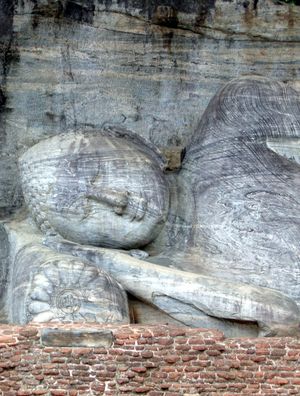|
|
Sri Lanka can well be crowned as the ‘spice basket’ of the world that attracted traders from all over the globe to this ethereal tropical land. This island nation over the Indian Ocean houses some of the best sun-kissed beaches and an amazing collection of flora and fauna. The aroma of delicious and spicy seafood cuisine, the view of gold-bedecked elephants outside Lankan temples and the greenery of tea plantations attract large number of tourists to Sri Lanka every year. Elegant hotels, cottages, restaurants and bed and breakfasts by the palm-tree lined coasts bustles with visitors all round the year. However, business travellers prefer to take apartment for rent or stay at affordable hostels in the former capital city of Colombo. Sri Jayewardenepura Kotte only ten kilometres from Colombo, is the administrative capital of Sri Lanka. Galle, Kankasanthurai and Trincomalee are the three major ports of the country.
Sri Lanka is situated off the southeast coast of India and spreads over an area of 25,332 sq miles (65,610 sq km). It provides accommodations to approximately 20,065,000 people, majority of them comprising of Buddhist Sinhalese community. The Hindu Tamil sect is another dominant race in Sri Lankan population. The Gulf of Mannar and the Palk Strait separates the teardrop-shaped nation from the mainland of Indian subcontinent. Major portion of the topography of Sri Lanka consists of flat and fertile land that nourishes along the banks of Mahaweli Ganga River. The rolling plain lands and coastlines find their way up in the central and southern mountainous terrains. The highest point of the country is at Pidurutalagala or Mt Pedro with a height of 2,524 metres. The Adam’s Peak is another hillock in Sri Lanka.

Statue of reclining Buddha in Polonnaruwa |
|
The climate of Sri Lanka is basically tropical that brings along very hot and humid summers. Cool temperatures are experienced in the higher elevations of southern sides. However, monsoons are the regular features of Sri Lankan weather report.
The rich and diverse history of Sri Lanka can be gauged, partially if not totally, from its different names like Ceylon, Teardrop of India, Resplendent Isle, Serendib, Pearl of the Orient and Island of Dharma. The Veddha people were the native inhabitants of Sri Lanka. The Sinhalese and Tamil communities of Sri Lanka are the descendants of immigrants arriving from India between the fourth and sixth century BC. The son of the then Indian Emperor Ashoka introduced the faith of Buddhism in the country in third century BC. Anuradhapura was the first capital of Sri Lanka. The colonisation of the island nation by Europeans began in the sixteenth century. The Portuguese were the first to arrive, followed by the Dutch and, then, the British. Sri Lanka came to be known as Ceylon under British rule and gained independence in 1948. Differences between Sinhalese population and Tamil separatists or LTTE are the cause of ongoing tension in Sri Lanka.
Sri Lanka shed its socialist economic policies in 1977 and spear headed for an open market system. This helped in bolstering foreign trade and revenue generation that largely comes from cinnamon and tea production. Apart from these two, food processing, textiles and apparel, food and beverages, telecommunications, and insurance and banking are other major industries of Sri Lanka. Despite the civil disturbances, the growth rate of the country ranked at 5.2% in 2004. Remittances from non-resident Sri Lankan also help in boosting the economy.
The political organ of Sri Lanka is led by the president of the nation who is considered both the chief of state and head of government. The prime minister serves as the deputy of the president and also helps in nominating the cabinet members. The unicameral Parliament of Sri Lanka comprises of 225 seats and the members are elected by popular votes after every six years.
|
|

